In Southern Spain, we suffer from Two different types of Cockroach, The Ameriacn cockroach, big and brown and very fast on its legs, and it's smaller cousin, The German cockroach.This will help you to identify which type you have.
The American cockroach, Periplaneta americana (Linnaeus), is the largest of the common peridomestic cockroaches measuring on average 4 cm in length. It occurs in buildings throughout Spain especially in commercial buildings.The American cockroach is second only to the German cockroach in abundance.
Figure 1. Ootheca and first, second, third and fourth instar nymphs of the American cockroach, Periplaneta americana (Linnaeus).
Distribution
The American cockroach, P. americana,
was introduced to the Spain from Africa as early as 1625 (Bell and Adiyodi 1981). The
American cockroach has spread
throughout the world by commerce. The cockroach is often found
residing indoors as well as outdoors. It is found mainly in basements,
sewers, steam tunnels, and drainage systems (Rust et. al. 1991). This
cockroach is readily found in commercial and large buildings such as
restaurants, grocery stores, bakeries, and where food is prepared and
stored. The American cockroach is also found in houses,After
heavy rain infestations of the cockroach can occur in homes. They can
develop to enormous numbers, greater than 5,000 sometimes being found in
individual sewer manholes.
American cockroaches are found in moist shady areas outdoors, in yards, hollow trees, wood piles, and mulch. They are occasionally found under roof shingles and in attics. The cockroaches dwell outside but will wander indoors for food and water or during extremes in weather conditions. Areas such as trees, woodpiles, Rubbish facilities, and accumulations of organic debris around homes provide adequate food, water, and harborages for peridomestic cockroaches such as the American cockroach . Mass migrations of the American cockroaches are common. They migrate by crawling or Gliding into structures often entering houses and apartments from sewers via the plumbing, by trees and shrubs located alongside buildings or trees with branches overhanging roofs facilitate the entry of cockroaches into the home. During the day the American cockroach, which responds negatively to light, rests in harborages close to water pipes, sinks, baths, and toilets, for example, where the microclimate is suitable for survival.
Description
Egg: Females of the American cockroach lay their eggs in a
hardened, purseshaped egg case called
an ootheca. About one week after mating the female produce an ootheca
and at the peak of her
reproductive period, she may form about two ootheca per week . The females on average produce an egg case about once a
month for ten months laying 16 eggs per egg case. The female deposits
the ootheca near a source of food by either simply dropping it or gluing
it to a surface with a secretion from her mouth. The deposited ootheca
contains water sufficient for the eggs to develop without receiving
additional water from the substrate. The egg
case is brown when deposited and turns black in a day or two. A typical
egg case contains about 14 to 16 eggs. It is about 8 mm long and 5 mm
high.
Larva or Nymph: The nymphal stage begins when the egg hatches and ends with the emergence of the adult. The number of times an American cockroach molts varies from six to 14. The first instar American cockroach is white immediately after hatching then becomes a grayish brown. After molting instars of the cockroach nymphs are white and then become a uniformly reddish-brown with the posterior margins of the thoracic and abdominal segments being a darker color. Wings are not present in the nymphal stages and wig pads become noticeable in the third or fourth instar. Complete development from egg to adult is about 600 days. The nymphs as well as the adults actively forage for food and water.
Adult: The adult American cockroach is reddish brown in appearance with a pale-brown or yellow band around the edge of the pronotum. The males are longer than the females because their wings extend 4 to 8 mm beyond the tip of the abdomen. Males and females have a pair of slender, jointed cerci at the tip of the abdomen. The male cockroaches have cerci with 18 to 19 segments while the female has 13 to 14 segments. The male American cockroaches have a pair of styli between the cerci while the females do not.
Figure 2. Fifth, sixth and seventh instar nymphs of the American cockroach, Periplaneta americana (Linnaeus).
Figure 3. Adult male American cockroach, Periplaneta americana (Linnaeus).
Figure 4. Adult female American cockroach, Periplaneta americana (Linnaeus).
Figure 5. Adult male American cockroach, Periplaneta americana (Linnaeus), cerci and stylets (ventral view).
Life Cycle
The American cockroach has three life stages: the egg, a variable
number of nymphal instars, and
adult. The life cycle from egg to adult averages about 600 days while
the adult life span may be
another 400 days. The immatures emerge from the egg case in about six
to eight weeks and mature in about six to twelve months. Adults can
live up to one year and an adult female will produce an average of 150
young in her lifetime. Environmental factors such as temperature and
humidity can increase or decrease the developmental time of the American
cockroach. Outdoors the female shows a preference for moist, concealed
ovipositon sites.
Figure 6. Newly molted adult American cockroach, Periplaneta americana (Linnaeus).
Diet
The American cockroach is an omnivorous and opportunistic feeder. It consumes decaying organic
matter but since the cockroach is a scavenger it will eat most anything. It prefers sweets and has
been observed eating paper, boots, hair, bread, fruit, book bindings, fish, peanuts, old rice, putrid
sake, the soft part on the inside of animal hides, cloth and dead insects.
Medical and Economic Significance
American
cockroaches can become a public health problem due to their association
with human
waste and disease, and their ability to move from sewers into homes
and commercial establishments.
In Spain during the summer, pavements and Gardens maybe overrun by
these cockroaches.
The cockroach is found in caves, mines, privies, latrines, cesspools,
sewers, sewerage treatment
plants, and dumps. Their presence in these habitats is of
epidemiological
significance. At least 22 species of pathogenic human bacteria,
virus, fungi, and protozoans, as well
as five species of helminthic worms, have been isolated from field
collected American cockroaches. Cockroaches are also aesthetically
displeasing because they can soil items with
their excrement and regurgitation.
Figure 7. American cockroach, Periplaneta americana (Linnaeus), and their fecal smears.
Management
Few natural enemies of the American cockroach have been found
Best managed by insecticides that can be applied to basement walls, wood scraps, and other infested locations. Residual sprays can be applied inside and around the perimeter of an infested structure. When insecticides and sprays are used to manage cockroach populations .Specialist Gel baits are extremely effective in controlling America cockroach populations.For a survey or cockroach treatment call Local pest Spain ask for Gray Tel: 952449591 covering the whole costa del sol
We are the number one pest control company on the costa del sol .www.localpest.es
The German cockroach is the cockroach
of concern, the species that gives all other cockroaches a bad name. It
occurs in structures throughout Spain, and is the species that
typically plagues multifamily dwellings.The German cockroach may be
confused with the Asian cockroach, While these cockroaches are very similar, there are some differences that a practiced eye can discern.
Figure 1. Adult female German cockroach
Distribution
The
German cockroach is found throughout the world in association with
humans. They are unable to survive in locations away from humans or
human activity. The major factor limiting German cockroach survival
appears to be cold temperatures. Studies have shown that German
cockroaches were unable to colonize inactive ships during cool
temperatures and could not survive in homes without central heating in
northern climates. The availability of water, food, and harborage also
govern the ability of German cockroaches to establish populations, and
limit growth.
Description
Egg. Eggs
are carried in an egg case, or ootheca, by the female until just before
hatch occurs. The ootheca can be seen protruding from the posterior end
(genital chamber) of the female. Nymphs will often hatch from the
ootheca while the female is still carrying it. A typical egg case
contains 30 to 40 eggs. The egg case is a tiny, brown, purse-shaped
capsule. It is about 8 mm long, 3 mm high, and 2 mm wide.
Figure 2. Oothecae (egg cases) of the German cockroachFigure 3. First instar nymphs emerging from the oothecae (egg case) of a German cockroach
Larva or Nymph. The
nymphal stage begins with egg hatch and ends with the emergence of the
adult. Nymphs are dark brown to black in color, with distinct dark
parallel bands running the length of the pronotum. Nymphs do not possess
wings. The number of molts required to reach the adult stage varies,
but the most frequently reported number of molts is six. The stage
between molts is called an instar. At room temperature nymphs complete
development in about 60 days. All developmental stages actively forage
for food and water.
Figure 4. Third instar nymph of German cockroach.Figure 5. Newly molted adult German cockroach, Within a few hours the cuticle will harden and darken.
Adult. The
adult is 10 to 15 mm long, brown to dark brown in color with two
distinct parallel bands running the length of the pronotum. The sexes
can be distinguished by the following characteristics: male - body thin
and slender, posterior abdomen is tapered, terminal segments of abdomen
visible, not covered by tegmina (leathery outer wings); female - body
stout, posterior abdomen is rounded, entire abdomen just covered by
tegmina.
Figure 6. Adult male German cockroach.Figure 7. Adult female German cockroach.
Life Cycle
The
German cockroach has three life stages typical of insects with
incomplete metamorphosis: the egg, nymph, and adult. The entire life
cycle is completed in about 100 days. However, factors such as
temperature, nutritional status, and strain differences may influence
the time required to complete a life cycle. German cockroaches breed
continuously with many overlapping generations present at any one time.
Under ideal conditions, population growth has been shown to be
exponential. Actively growing field populations are comprised of 80
percent nymphs and 20 percent adults. The German cockroach is
omnivorous, eating table scraps, pet food, and even book bindings.
Medical and Economic Significance
German
cockroaches adulterate food or food products with their feces and
defensive secretions, physically transport and often harbor pathogenic
organisms, may cause severe allergic responses, and in extremely heavy
infestations have been reported to bite humans and feed on food residues
on the faces of sleeping humans. In addition, some scientists suggest
that German cockroach infestations may cause human psychological stress
and that the stigma associated with infestations alters human behavior.
For example, people with infested houses do less entertaining, and avoid
the kitchen at night for fear of encountering a cockroach.
Action Threshold
Since
the German cockroach is considered an aesthetic pest, the action
threshold for this insect depends upon the tolerance of the people
living in the infested dwelling. However, most people associate
cockroach infestations with poor sanitary conditions and typically go to
excessive lengths to eradicate them from their houses.
Management
Insecticides
Non
toxic and low toxic alternatives for German cockroach control are
available. Sticky traps can be used to monitor or reduce population
size. Improving sanitation by eliminating food and water sources and
clutter can have a significant impact on reducing the chances of
infestation population size. Finally, exclusion practices such as
sealing cracks and crevices will reduce harborage space and also
negatively impact population size.
To arrange a survey or pest control treatment call Gray at Local Pest Spain
on 0034 952449591 or visit the website www.localpest.es
Control De Plagas Costa Del Sol Espana
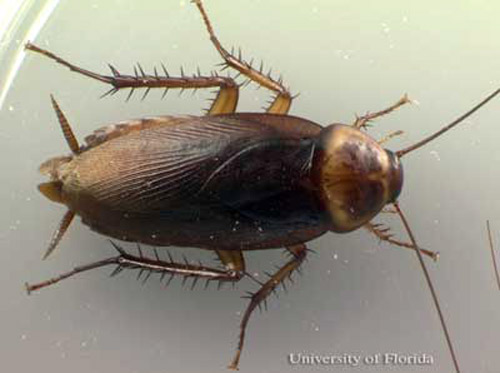
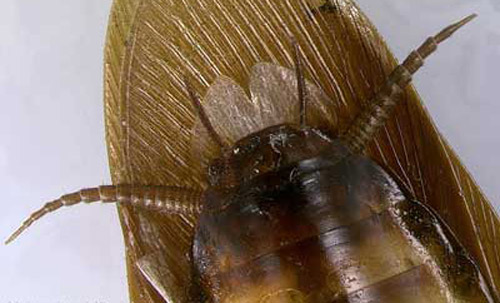
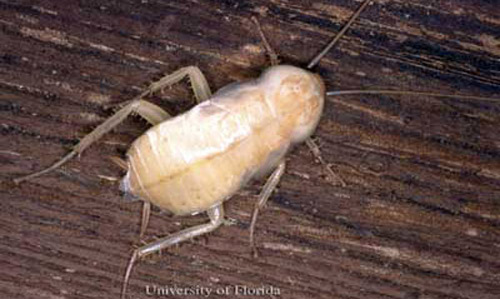
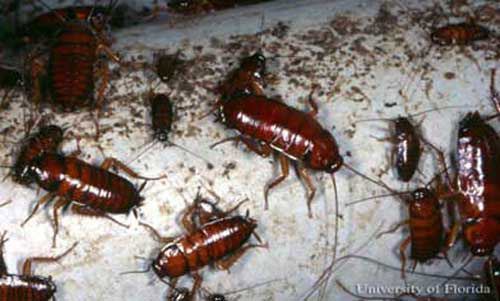
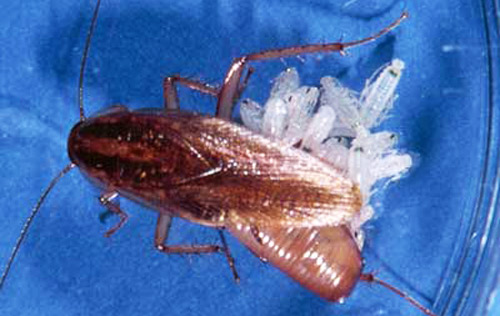
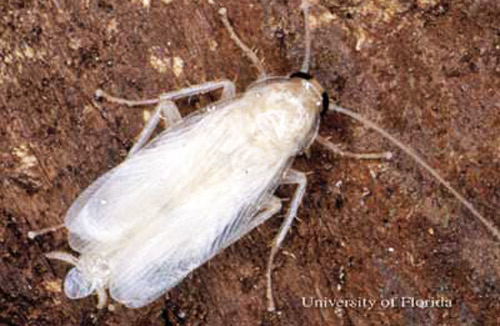
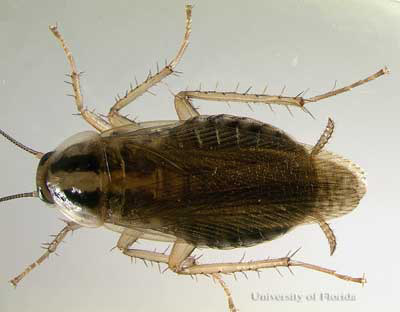
I just see the post i am so happy the post of information's. So I have really enjoyed and reading your blogs for Termite Treatment.
ReplyDeleteThank you so much Love your blog..
ReplyDeleteEXTERMINADOR